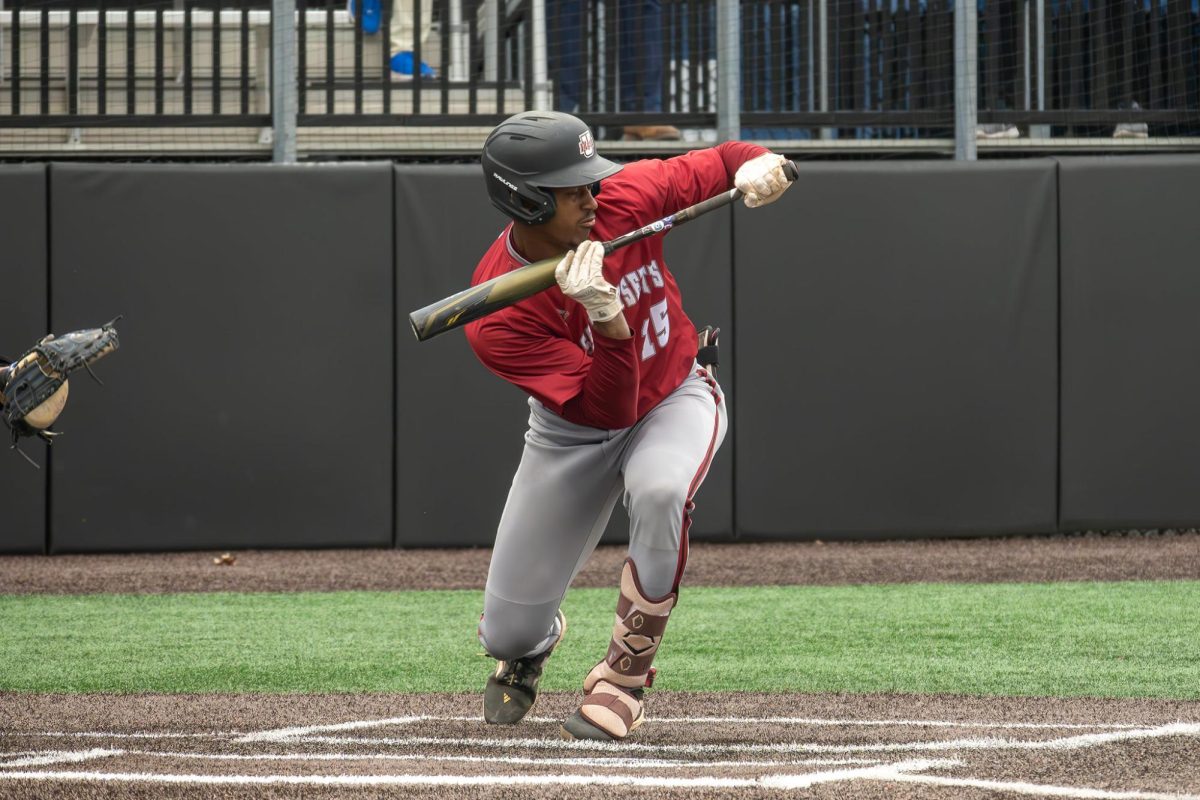
“¿Cómo, cómo fue? How did it happen? Así. Just like that…El corazón salió solo…The heart came out on its own.”
What happens when two people bounce ideas off of one another, like artistic ping-pong? How can multiple minds and creations coexist, intertwine and birth something whole? These were the questions explored by French surrealists in a quirky parlor game called Exquisite Cadaver. The goal? To trade off random sentences from one person to another and add to the poetry with a new line inspired by the previous writer. The result? Something a little beyond realism; something special in its freedom and unconventionality.
Thanks to director/choreographers Leslie Frye Maietta and Thomas Vacanti, as well as 35 UMass dancers, there was no need to time-travel to 20th century France to experience Exquisite Cadaver. From Nov. 30 to Dec. 2, the UMass Dance Department presented “Cadáver Exquisito” at the Totman Performance Lab, infusing the surrealist game with the surrealist poetry of Pablo Neruda and Federico García Lorca.
The night began with an unconventional tone. At 7:20 p.m., ten minutes before the billed starting time, I entered the performance space only to be greeted by the dancers already in full motion. I thought I misread the time, but I had actually walked into a pre-show and unintentionally immersed myself into moving poetry.
On the Marley floor stage, there are four points of viewing along the four edges. The corners of the stage were cleverly utilized: a mound of dirt, green, grass-like sprouts, and empty earthenware pots sitting in one corner.
In the earlier part of the show, a man sat bound to a chair and blindfolded with a tousle of cloth restraints. He looked partially mummified, a non-seeing part of the audience highlighted by a scaffold of lights behind him.
The dancers were already in a rather dizzying array of movement. A cluster of leotard-and-tights clad performers “piqué” (step onto pointed feet) with folded arms elbows-out like bird wings.
Another group was squatting widely and then sliding their feet together, swiveling them in and out of parallel and crossed positions to a soundtrack of birds chirping and soft, rustling nature sounds. Another ten or so dancers in the poet’s corner knelt, sat or, most oddly, laid back with their legs stretched out toward the ceiling, balancing bright green apples on the soles of their feet. All their expressions were stoic not in a detached way, but self-contained — pensive.
I find that a fledgling flaw in dance groups is often synchronicity, and it showed in particular moments of “Cadáver Exquisito.” At times, too, a pirouette ended in a hiccup, leaving the audience wanting just a bit more control. All this however, is posed not as criticism (Because goodness knows I, the humble reviewer, can only dream of dancing at their caliber). But rather it is an appreciation of the rawness and the effort of performers who are not only budding dancers but also budding beings. Each dancer moved with deliberation, surrendering to movement from head to toe. In several standout moments, the harmony of physics and the body were remarkable.
Energy, flow, sway, swing — those words surged in my mind as the dancers stepped into arabesques, pirouettes and tip-toe positions. Ripples traveled with abandon in all extensions of the body. Their arms, their heads, their backs! These instances contrasted delectably with moments of suspense in the peak of chassés, small developpés and penchée attitudes (That is, glides, beautifully unfolding legs and upside-down dips on one smoothly-balanced stance). These were all movements that froze for a fraction of time, bringing a short pause.
In a highlighted duet, two dancers played, crawling and tumbling like children on a cleared stage. The other performers stood along the edge of the floor in a rectangle, another layer of silent audience members.
One of the two dancers on stage gathered the poet’s binds — now revealed to be a knotted string of multicolored squares in its unraveled form — as a small section of cloth blindfolded her fellow dancer, who laughed joyously, if not eerily, all the while.
The dancer stood with her friend as an axis, running in a circle lassoed by the binds around her eyes. Her laughter was true and rang in every corner of the vast and echoing space. She accelerated with such ferocity that her radius widened until she nearly crashed full-speed into another dancer.
In front of me, I heard a half-restrained gasp from a viewer. Internally, I had the same reaction. The dancer’s physical deceleration was still graceful, but the flight in the arms and legs dissipated, filling the air with tight anticipation — a hot constriction in a collective throat begging to be swallowed.
This is where construction and chaos touched fingertips. Was it ever intentional that the running dancer could come so close to hurtling into her fellow performers? This is a moment where audience members appreciated the physical and emotional risk given to certain choreographic moments. Mirth, fear and abandon coexisted as a whirlwind.
Several scenes later, another duo was accompanied by a recorded poetry recitation in Spanish. One of the dancers, costumed in a yellow leotard and grey suspenders, was nearly indistinguishable in the cadre before. In that exposed segment, however, her movement flung across empty spaces.
As she turned, swept and unfurled from the ground, I half expected her hand to detach and smack an unwitting audience member, or perhaps several of her fingernails to fly and bury themselves into the seats with the release of her momentum. To be serious, though, I was surprised that a bobby pin or two was not flung onto the stage, as can be common with particularly energetic dancers.
As exciting as witnessing all this was, it wasn’t until two-thirds of the way into the performance that I realized I had been viewing it from the wrong perspective all along; I was watching everything from a wide-scoped view, trying to take in everything at once — everybody and every movement.
“Cadáver Exquisito” was not a piece to be taken whole, its seemingly compartmentalized clusters of dancers swept up the eyes all at once. It was not disjointed either; it was harmonic, like melodies and counter-melodies playing off of one another. There were motifs present: a small stamp of the feet and wiggle of the shoulder that evoked images of excited children or dogs, a flicking, jerking arm as if in entreaty and an unfurling and abrupt retraction of the arms that sewed the scenes together.
The repetition of movement and sound pointed to the building nature of the entire dance. Do not be mistaken; there was no order, either of the conceptual nor the sequential kind, but it was not a jumble either.
In different scenes, dancers vacillated between life — springing onto pointe; spinning twice, thrice in their “tours” (jumps); performing “tendus” (extended points of the leg and foot)—and death — spirals into collapse and sprawling haphazardly one the floor one-by-one in successive extinguishment.
Poetry can be constructed like this, from passing hands and interchanging imaginations. Frye Maietta and Vacanti prove this well, giving us reflection, recitation and rite. It is not a Frankenstein’s monster of a creation; it is a weave of intertwining consciousness and the best in collaboration. Frye Maietta and Vacanti have made dance like poetry, and the UMass dancers, as both living bodies and cadavers, are indeed exquisite.
Sam Wong can be reached at [email protected].


















